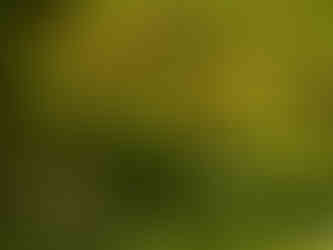Rift Valley Lakes
- Faraaz Abdool

- May 6
- 4 min read
The lakes of Kenya’s Great Rift Valley are legendary in their allure. Some are fed by rivers, others by springs - to access these lakes one must climb to great heights, as these are mountain lakes. It seems counterintuitive that there are bodies of water at this altitude - but there are several of them. Highest of these is Lake Naivasha, at a dizzying 1,884 metres above sea level.


With a surface much like glass due to the calm atmosphere, Lake Naivasha carves a stunning vista with a post-apocalyptic skyline. A glimpse into our future, perhaps, as the lake waters have been increasing beyond levels seen in recent history, inundating schools, homes, and even hotels. The bare branches of drowned trees bear witness to the rising water. The air is considerably chilled here, most noticeably so in the night and early morning. The bleating of African Fish-Eagles echoes across the lake as birds lay claim to territory. This is interspersed by the occasional grunting of a Nile Hippopotamus - their true number concealed during the day when they remain submerged.
There are no crocodiles here, as it is far too chilly for reptilians of those dimensions. Great news for the waterbucks, which can graze chest-deep in peace. There is a thriving fish population which supports a wide variety of piscivores. From the fish-eagles to an array of herons and egrets along with two species of cormorants, there are always avian eyes on the lookout for movement beneath the surface.


Kingfishers on the eastern side of the Atlantic aren’t always interested in fish, with many species opting for small reptiles and amphibians. Some species can be found in dry habitats, such is their independence from water and the fish therein. Several species of kingfisher enjoy the bountiful fishing at Lake Naivasha, though, including the iconic Pied Kingfisher. This charismatic and distinctive kingfisher is one of the largest birds on earth to have the ability to hover. This special adaptation allows the kingfisher to stalk fish far away from the shore. It also makes the Pied Kingfisher very visible to the human observer - unlike some other kingfishers that prefer to strike from a secluded perch.


Small islands and remote spits of land within the lake offer sanctuary to any number of birds seeking a comfortable roost. Cormorants breed communally on some of the larger trees around the lake that still have their roots in soil. Even if the birds are not present, the copious whitewash coating almost every branch is a giveaway. The dense aquatic vegetation is a nursery for several species of animals, from mosquitoes to fish to jacanas. The gnarled branches of dead trees provide adequate habitat for cavity nesters like woodpeckers. There is a predator to exploit every niche in a flourishing ecosystem, and the resident African Harrier-Hawks have unique, double-jointed limbs which enable them to reach into holes, cracks, and crevices to extract eggs and nestlings. Consequently, they are often mercilessly mobbed by most birds that are smaller than them.
A small island within the lake proved to be popular with the resident Yellow-billed Storks, some stood around idly while other sat on their haunches. One bird particularly eager to soak up some sunshine splayed its wings to maximise exposure.
At this altitude, the sun can burn exposed skin very easily. Once night arrives, therefore, it is important to retreat from the water’s edge as the local hippo population is generally eager to saunter onto terra firma. Once on land, they tiptoe around, daintily grazing without worry about the sun scorching their delicate skin.

From all angles, Lake Nakuru seems like a painting. Silhouettes carefully etched against a graduated backdrop, each time the sun rises above the park it pours light over a truly magical setting. Even with the sun at its zenith, the lake has an otherworldly quality. Here is also devoid of crocodiles but there are hippos, buffalos, and numerous other animals.

Lake Nakuru National Park has a decorated history and a legacy of wildlife conservation. The accolades this park has accrued over the years are many, including official designations as a Ramsar Site, Important Bird Area, and UNESCO World Heritage Site. With over four hundred species of birds recorded, the park also provided a space for the introduction of several species of large mammals for the purpose of conservation. Rothschild’s Giraffes were introduced in 1977, and White Rhinoceroses followed in the early 1980’s. Electric fences were constructed along the park limits to keep poachers out, and the rhinos in.
Upon entering the park, sizable Pied Crows and Speckled Pigeons keep an eye on proceedings, higher in the trees the thinner branches are abuzz with multiple species of weavers, these ardent builders intent to stake a claim on the best real estate. Guineafowl rummage in the swaying grass, and troops of Olive Baboons march together, the largest and most formidable males split between leading and bringing up the rear. There are no lions in this park, but there are leopards - the baboons’ sworn enemy.

The park’s diverse and stunning birdlife is always on show. Various forms of eagles and buzzards are indicative of a thriving ecosystem. Any decaying branches are attended to by an array of woodpeckers, keen on slurping up industrious termites. No matter how tiny the trickle, running water attracts thirsty birds of all sizes, shapes, and colours. Cordon-bleus, waxbills, canaries, bishops, starlings - thirst must be quenched.















































Comments